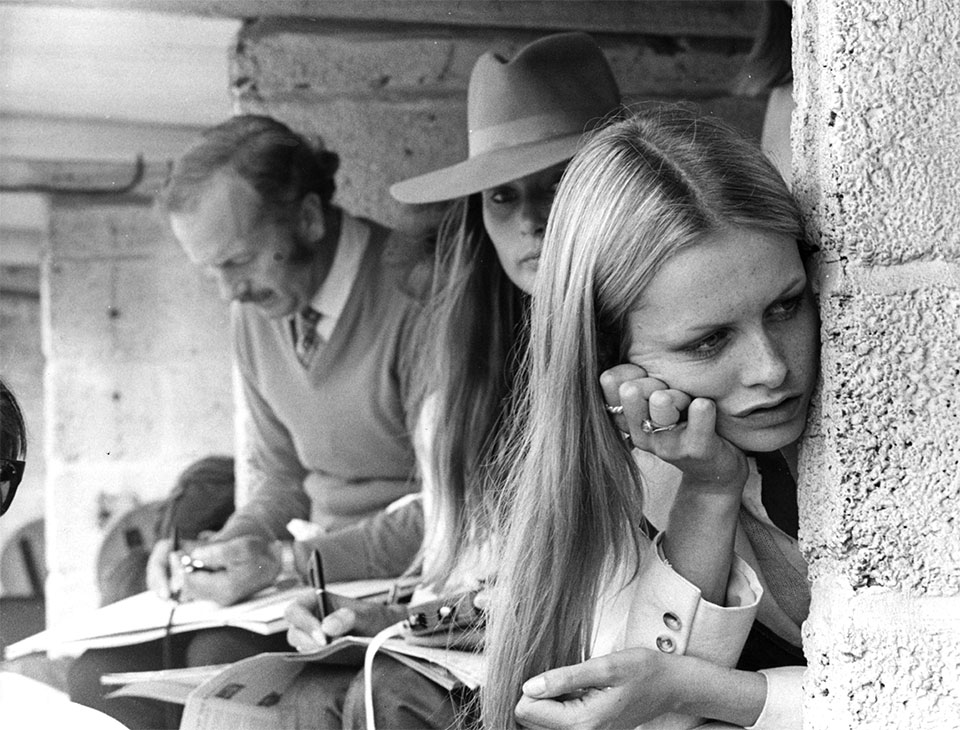
Amidst all the thrilling action of New York Fashion Week, there are — yes — moments of downtime. And not quiet downtime where you can, say, tuck into a good book, run an errand or step into a salon for a quick mani. We’re talking about trapped downtime where the only inevitable outcome is boredom, dreaded out-of-your-mind boredom. Anyone who has attended a runway event knows what we’re talking about: models in hair and makeup, photographers and front-row guests waiting for the show to start, backstage crew waiting for the show to start….
Naturally, the smartphone changed all that. The second you’re not needed to be active and present, out comes the iPhone or Android and the endless apps demanding our attention: Instagram, Facebook, Email, Candy Crush… Like, follow, scroll, like, like, like, whoosh, ding!
But what if you could use that downtime to channel your inner Einstein or Picasso? It’s possible, according to Manoush Zomorodi, host of the podcast Note to Self at WNYC Studios, and her new book Bored and Brilliant, which was inspired by an experiment she conducted with her listeners. The subtitle says it all: “Unlock your most productive and creative self by spacing out.” (Yes, you read that right.)
“People who are bored think more creatively than those who aren’t,” Zomorodi writes, citing numerous studies and experts — not to mention feedback from podcast participants. Per psychologist Dr. Sandi Mann: “When we’re bored, we’re searching for something to stimulate us that we can’t find in our immediate surroundings. So we might try to find that stimulation by our minds wandering and going off someplace in our heads. This is what can stimulate creativity, because once you start daydreaming and allow your mind to wander, you start thinking beyond the conscious and into the subconscious. This process allows different connections to take place. It’s really awesome.”
Here, Zomorodi’s seven-step, seven-day program to liberating your creative heights. Why not tackle one per day during NYFW? By the time you finish, you’ll be ready to hit the rest of the fashion circuit — London, Milan, Paris — with your superlative self primed and ready.
1. Observe Yourself
How digitally dependent are you, exactly? Step one is to create a baseline. You can easily do so with the Moment or BreakFree app, which tracks your smartphone usage, whether you’re checking email or the latest weather report.
2. Keep Your Devices Out of Reach While in Motion
It’s a simple enough rule: when you’re en route, keep the phone hidden. It doesn’t matter if you’re on the bus or subway, or just walking to grab lunch. Don’t. Pick. It. Up. “We think of those moments as unproductive, inefficient or lost if we’re not checking our mail or doing other tasks. But these are ideal times for letting our minds wander,” Zomorodi notes.
3. Photo-Free Day
Sorry, compulsive Instagrammers — that selfie is just going to have to wait. (Disclaimer: If snapping away at fashion week is part of the job, we’re granting a pass — while the shows are taking place, that is.)
4. Delete That App
Which app is your Achilles’ heel? The one you just can’t quit? The time sucks of all time sucks? Delete it. Once the week is over, you’ll find you’re able to regulate your usage much better. Or you can take a page from one of Zomorodi’s listeners, Adam — after the seven-day challenge, he was able to easily institute No-Twitter Mondays.
5. Take a Fakecation
Unplug and enjoy. “Decide how long you need: An afternoon? An hour? Twenty minutes? It’s up to you,” says Zomorodi. “It’s during those breaks from email, texting, social media and calls that interrupt all day long when connections are made and insights refined.”
6. Observe Something Else
“Reclaim a little offline wonder for yourselves,” Zomorodi says, noting that this can mean anything from taking a stroll in the park or hanging out at a café. “Watch people, or birds, or anything that strikes you.” Or, we might add, the front-row denizens across from you or the make-up artist in her element in the back. “I’m asking you to notice,” she continues, “because noticing is the first step in creating.”
7. The Bored & Brilliant Challenge
This one is a three-parter. First, “identify an aspect of your life that you’ve been confused by, avoiding or downright terrified to think about.” Then, set aside 30 minutes to engage in a mindless task — watching water boil or writing binary numbers down on a sheet of paper. “Immediately after you’ve completed step two,” Zomorodi advises, “and are mind-numbingly bored, sit down with a pen and pad and put your mind to the task of solving the problem identified in step one…. Don’t worry about executing the plan just yet — that will come in time. Right now, the goal is to use boredom to unlock a brilliant solution to your problem.”
For more details and tips, pick up a copy of Bored and Brilliant by St. Martin’s Press.
